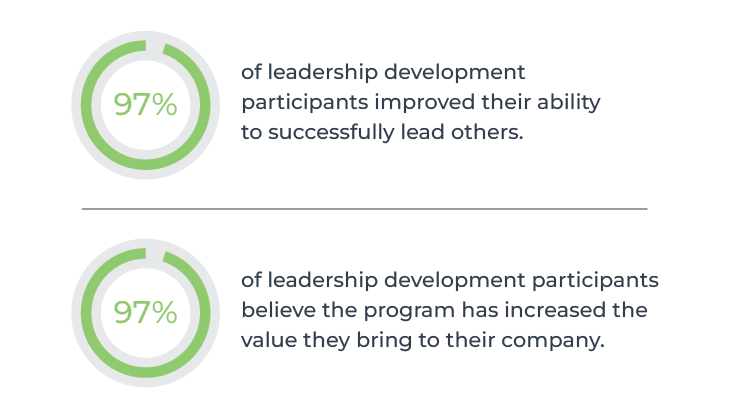It’s an important question.
Who on your team has what it takes to drive your company’s future success?
Leadership transitions are coming whether you’re ready or not. Maybe key leaders are nearing retirement. Maybe longtime contributors are stepping into executive roles. Maybe your company is growing fast and creating new leadership opportunities. Or maybe you’re thinking about your own exit strategy.
These shifts happen every day. If you’re not preparing your team for them now, you’re putting your company at risk.
Succession planning for leaders isn’t just about filling roles. It’s about preparing people to guide your company into the future.
If the individuals you’re counting on aren’t ready to lead, the whole plan falls apart. So, the question becomes: How do you build a bottomless leadership bench that’s capable of running a business?
The Costs of Poor Succession Planning for Leaders
Leadership transitions are inevitable. When they happen (and they will) companies without a strong leadership bench face costly challenges.
Disrupted operations: Whether the transition is planned or sudden, if a successor isn’t fully ready, decisions slow down, execution stalls, and momentum suffers.
Lost revenue: Uncertainty during leadership shifts often creates hesitation, slowing teams down and impacting the bottom line.
Top talent turnover: In times of instability, high performers start looking for security elsewhere taking years of knowledge and know-how with them.
The Data Backs It Up
- Organizations without a formal succession plan are twice as likely to have unfilled leadership roles after six months.
- Leadership vacancies can reduce team productivity by 20-30% and quarterly revenue by 5-10%.
- The average cost to replace a senior executive can equal 2-3x their annual salary when factoring in recruiting, onboarding, and lost business.
These statistics prove that succession planning for leaders isn’t optional. It’s essential.
The truth? Gaps in leadership come with real costs. Your organization’s time, money, and stability. If you’re not actively developing your next generation of leaders, you’re putting your company at risk.
How to Identify Future Leaders in Your Organization
So you know which roles are succession priorities. Now the big question. Who’s capable of filling them in the future?
Step 1. Start by benchmarking your current leaders. Succession planning for leaders means asking: what does great leadership currently look like in your organization? Our Succession Planning Guide walks you through the four crucial areas to benchmark succession priority roles:
- Role Accountability
- Leadership Capability
- Behavioral Tendencies
- Culture Fit
When you evaluate your leaders in these areas, you create a clear picture of success. That benchmark becomes your reference point for identifying future talent.
Step 2. Next, look for individuals who demonstrate potential in these areas. Assessing potential successors in a consistent manner with current role benchmarks allows for a direct comparison of a candidate to what success currently looks like in each role. Doing so let’s you select the candidates that are most ready for the role, while also identifying gaps to develop against.
Additional quiet but powerful leadership traits look like:
- Adaptability: Embraces change and finds solutions when things get messy.
- Emotional Intelligence: Builds trust, listens well, and manages conflict constructively.
- Ownership Mindset: Thinks like an owner, not just an employee.
- Influence Without Authority: Inspires others to act-even without a title.
Want even more help finding your future leaders? Read our article “What is An Ideal Leader in Business?”
Bottom line: Benchmark your current high-performing leaders, then identify people who show these qualities and the capacity to grow into those roles.
What to Include in an Individual Development Plan (IDP) for Successors
Each successor should have a personalized development plan aligned with their current strengths and the demands of the target role. These plans should be built around the four benchmark areas outlined earlier—Role Accountability, Leadership Capability, Behavioral Tendencies, and Culture Fit—to ensure well-rounded development.
Here are effective development strategies for each area:
Role Accountability
Help successors build the technical or role-specific skills required for their future responsibilities through:
- Job-Specific Training Programs
- Certifications or Licensure
- Online Learning Modules
- Higher Education Opportunities
- Internal Mentorship
Leadership Capability
Prepare them to lead people, projects, and strategy with:
- Leadership Development Programs (a core component of succession planning for leaders)
- Executive Coaching
- Peer or Executive Mentorship

Behavioral Tendencies
Support mindset and habit growth through:
- Behavioral Coaching
- Behavioral Assessments (e.g., DISC, EQ-i, Hogan, PXT)
Culture Fit
Culture can be hard to develop but is also one of the most critical. Help successors internalize and model company values by:
- Pairing them with culture-aligned mentors
- Hosting Culture Workshops or Roundtable Discussions
A plan without action is just a document. Success comes from consistent follow-through and accountability.
Succession planning for leaders is so much more than filling roles on paper. It’s about building up your leaders so they’re ready to step up without missing a beat.
Your people are your greatest investment. When you take time to develop them today, you secure the future of your organization tomorrow.
Ready to get started with succession planning for leaders?
Download our free Succession Planning Guide and identify your future leaders today.
Or jump right into the first step of Succession Planning in our FREE Succession Planning Masterclass






